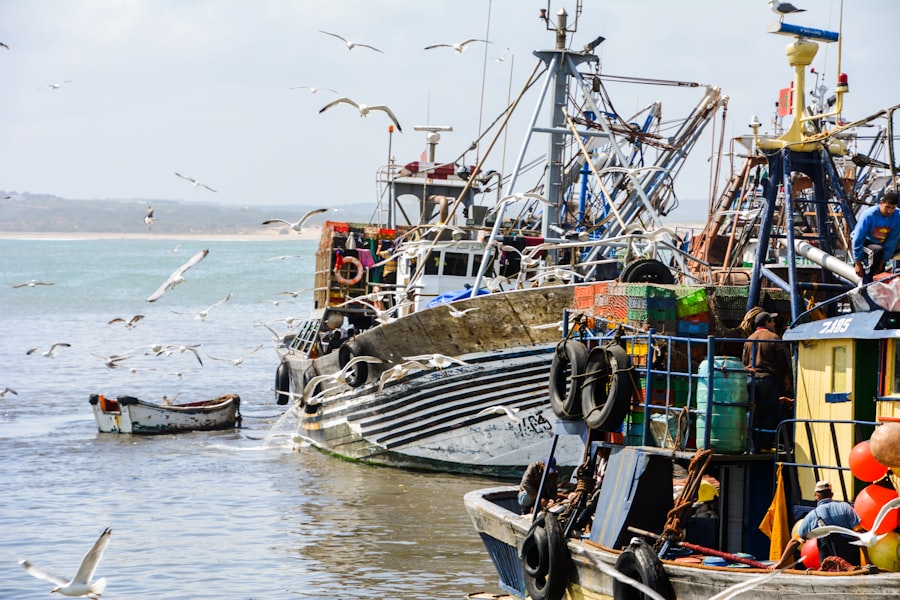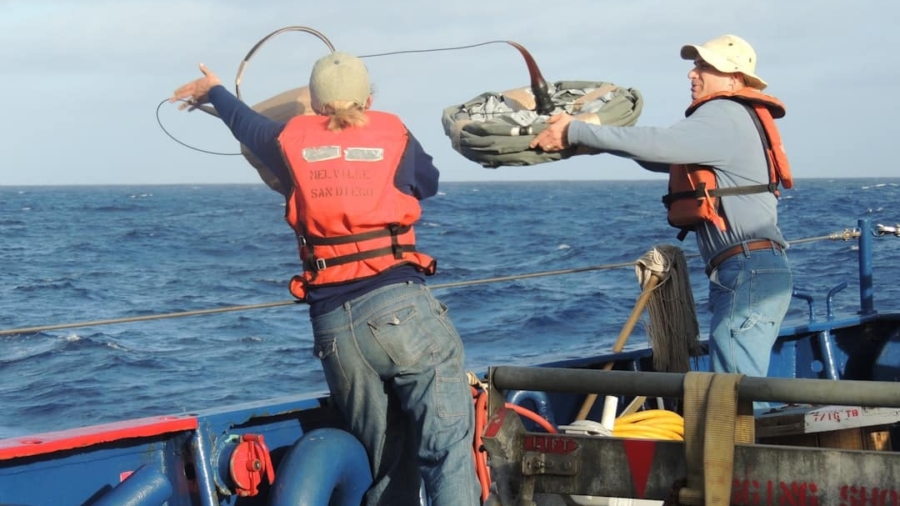Illegal fishing practices, often referred to as IUU (Illegal, Unreported, and Unregulated) fishing, represent a significant threat to global marine ecosystems and the sustainability of fish stocks. This illicit activity encompasses a range of actions, including fishing without a license, exceeding catch limits, and using prohibited gear. The World Wildlife Fund estimates that IUU fishing accounts for up to 30% of the global catch, which not only undermines legitimate fishing operations but also poses severe risks to marine biodiversity.
The motivations behind illegal fishing are multifaceted, often driven by economic desperation, lack of enforcement, and the high demand for seafood in international markets. The consequences of illegal fishing extend beyond the immediate economic implications for legitimate fishers. Overfishing due to IUU practices can lead to the depletion of fish populations, disrupting the delicate balance of marine ecosystems.
This disruption can have cascading effects on other species, including those that rely on fish as a primary food source. Furthermore, illegal fishing often occurs in protected areas, exacerbating the degradation of critical habitats such as coral reefs and mangroves. As the global population continues to grow and the demand for seafood increases, addressing illegal fishing practices has become an urgent priority for governments, conservationists, and international organizations alike.
Key Takeaways
- Illegal fishing practices pose a significant threat to marine ecosystems and global food security.
- The impact of illegal fishing includes overfishing, habitat destruction, and disruption of marine food chains.
- Big data plays a crucial role in combating illegal fishing by providing real-time information and analysis of fishing activities.
- Satellite data is used to track suspicious fishing vessels and monitor their movements in remote areas.
- Analyzing patterns and trends in fishing activities helps identify illegal fishing hotspots and inform enforcement efforts.
The Impact of Illegal Fishing on Marine Ecosystems
The impact of illegal fishing on marine ecosystems is profound and multifaceted. One of the most immediate effects is the overexploitation of fish stocks. When fish are caught illegally, they are often taken from populations that are already under stress from legal fishing activities.
This overfishing can lead to a decline in fish populations, which in turn affects the entire food web. For instance, the depletion of key species such as cod or tuna can disrupt predator-prey relationships, leading to an imbalance that can affect other marine life, including seabirds and marine mammals that depend on these fish for sustenance. Moreover, illegal fishing practices often involve destructive methods that further harm marine habitats.
For example, the use of bottom trawling—where heavy nets are dragged across the ocean floor—can devastate sensitive ecosystems like coral reefs and seagrass beds. These habitats are crucial not only for the species that inhabit them but also for the overall health of the ocean. The destruction of these environments can lead to a loss of biodiversity, making ecosystems less resilient to changes such as climate change or pollution.
Additionally, illegal fishing can contribute to habitat degradation through bycatch—the unintentional capture of non-target species—which can further threaten vulnerable populations.
The Role of Big Data in Combating Illegal Fishing

Big data has emerged as a powerful tool in the fight against illegal fishing practices. By harnessing vast amounts of information from various sources, stakeholders can gain insights into fishing activities and identify patterns that may indicate illegal behavior. This data can come from satellite imagery, vessel monitoring systems (VMS), and even social media platforms where fishermen share information about their catches.
The integration of these diverse data sources allows for a more comprehensive understanding of fishing dynamics and enhances the ability to detect anomalies that may suggest illegal activities. One notable example of big data’s application in combating illegal fishing is the Global Fishing Watch initiative. This platform utilizes satellite technology to track commercial fishing vessels in real-time, providing transparency in fishing activities across the globe.
By analyzing vessel movements and behaviors, researchers can identify suspicious patterns indicative of IUU fishing. For instance, if a vessel suddenly changes its course or turns off its tracking device in a known protected area, it raises red flags for potential illegal activity. The ability to visualize this data on an interactive map empowers governments and conservation organizations to take proactive measures against illegal fishing.
Using Satellite Data to Track Suspicious Fishing Vessels
Satellite data plays a crucial role in monitoring and tracking suspicious fishing vessels operating in international waters. With advancements in technology, satellites equipped with synthetic aperture radar (SAR) and optical imaging capabilities can detect vessels even in challenging weather conditions or during nighttime. This capability allows for continuous surveillance of vast ocean areas that would otherwise be difficult to monitor effectively.
By analyzing satellite imagery, authorities can identify vessels that may be engaging in illegal activities, such as operating without proper licenses or entering restricted zones. One practical application of satellite data is its use in identifying “dark vessels”—those that do not transmit their location via automatic identification systems (AIS).
By employing machine learning algorithms to analyze satellite data, researchers can develop models that predict likely locations of dark vessels based on historical patterns and environmental factors such as sea temperature and currents. This predictive capability enables enforcement agencies to focus their resources on high-risk areas, increasing the likelihood of intercepting illegal operations before they can deplete fish stocks.
Analyzing Patterns and Trends in Fishing Activities
Analyzing patterns and trends in fishing activities is essential for understanding the scope of illegal fishing and developing effective countermeasures.
For instance, if a particular region experiences an unusual spike in catch volume during a time when fish populations are known to be low, it may warrant further investigation into potential illegal activities.
Furthermore, analyzing trends over time can reveal shifts in fishing practices that may correlate with regulatory changes or enforcement efforts. For example, if stricter regulations are implemented in one area leading to a decline in legal catches, it may result in an increase in illegal fishing activities as fishers seek alternative means to sustain their livelihoods. Understanding these dynamics allows policymakers to adapt their strategies and implement targeted interventions that address the root causes of illegal fishing while promoting sustainable practices among local communities.
Collaboration and Information Sharing Among Countries

Collaboration and information sharing among countries are vital components in the fight against illegal fishing practices. Given that many fish species migrate across international boundaries, effective management requires coordinated efforts among nations. Regional fisheries management organizations (RFMOs) play a crucial role in facilitating this collaboration by bringing together member states to establish shared regulations and monitoring systems.
These organizations help ensure that all countries adhere to sustainable fishing practices and work collectively to combat IUU fishing. In addition to formal agreements through RFMOs, informal networks among countries can enhance information sharing regarding suspicious activities. For instance, countries can establish bilateral agreements to share intelligence on known illegal operators or collaborate on joint patrols in high-risk areas.
The use of technology further facilitates this collaboration; platforms like Global Fishing Watch allow countries to access real-time data on vessel movements, enabling them to respond swiftly to potential violations. By fostering a culture of cooperation and transparency among nations, the global community can strengthen its collective efforts against illegal fishing.
Implementing Enforcement and Regulation Measures
Implementing effective enforcement and regulation measures is critical for curbing illegal fishing practices. Governments must establish robust legal frameworks that define IUU fishing activities and outline penalties for violations. These regulations should be supported by adequate resources for monitoring and enforcement agencies to carry out their mandates effectively.
For instance, countries may invest in patrol vessels equipped with advanced technology for surveillance or establish dedicated task forces focused on combating IUU fishing. Moreover, community engagement plays a significant role in enforcement efforts. Local fishers often possess valuable knowledge about their waters and can serve as critical allies in identifying suspicious activities.
By involving local communities in monitoring efforts and providing them with incentives for reporting illegal practices, governments can create a sense of shared responsibility for marine resource management. Education campaigns aimed at raising awareness about the importance of sustainable fishing practices can also foster a culture of compliance among fishers.
The Future of Using Big Data to Combat Illegal Fishing Practices
The future of using big data to combat illegal fishing practices looks promising as technological advancements continue to evolve. The integration of artificial intelligence (AI) and machine learning into data analysis processes will enhance predictive capabilities, allowing authorities to anticipate illegal activities before they occur. As more data becomes available from various sources—such as drones, underwater sensors, and social media—stakeholders will have access to an increasingly comprehensive view of global fishing dynamics.
Additionally, blockchain technology holds potential for improving traceability within the seafood supply chain. By creating immutable records of fish catches from point of origin to market, stakeholders can ensure that seafood products are sourced sustainably and legally. This transparency not only helps combat IUU fishing but also empowers consumers to make informed choices about the seafood they purchase.
As collaboration among countries strengthens and technological innovations continue to emerge, the fight against illegal fishing will become more effective and efficient. The integration of big data analytics into enforcement strategies will enable stakeholders to respond proactively to threats against marine ecosystems while promoting sustainable practices that benefit both local communities and global fisheries alike.
In the ongoing battle against illegal fishing practices, big data has emerged as a powerful tool, enabling authorities to monitor and manage marine resources more effectively. By leveraging advanced analytics and satellite technology, organizations can track suspicious activities and enforce regulations more efficiently. A related article that delves into the innovative use of technology, albeit in a different field, is Unlock Your Creative Potential with the Samsung Galaxy Book Flex2 Alpha. This piece explores how cutting-edge devices can enhance productivity and creativity, much like how big data is revolutionizing the fight against illegal fishing.
FAQs
What is illegal fishing?
Illegal fishing refers to fishing activities conducted in violation of laws and regulations, such as fishing in restricted areas, using prohibited gear, or exceeding catch limits.
How does big data help combat illegal fishing?
Big data technologies, such as satellite monitoring, automatic identification systems, and data analytics, can be used to track and analyze fishing vessel movements, identify suspicious activities, and enforce fishing regulations more effectively.
What are the benefits of using big data to combat illegal fishing?
Using big data can help authorities detect and prevent illegal fishing activities, protect marine ecosystems, and promote sustainable fishing practices. It can also improve transparency in the seafood supply chain and support the livelihoods of legitimate fishers.
What are some challenges in using big data to combat illegal fishing?
Challenges in using big data for combating illegal fishing include the need for international cooperation, data privacy concerns, and the technical and financial resources required to implement and maintain big data systems. Additionally, there may be limitations in data accuracy and coverage in certain regions.

